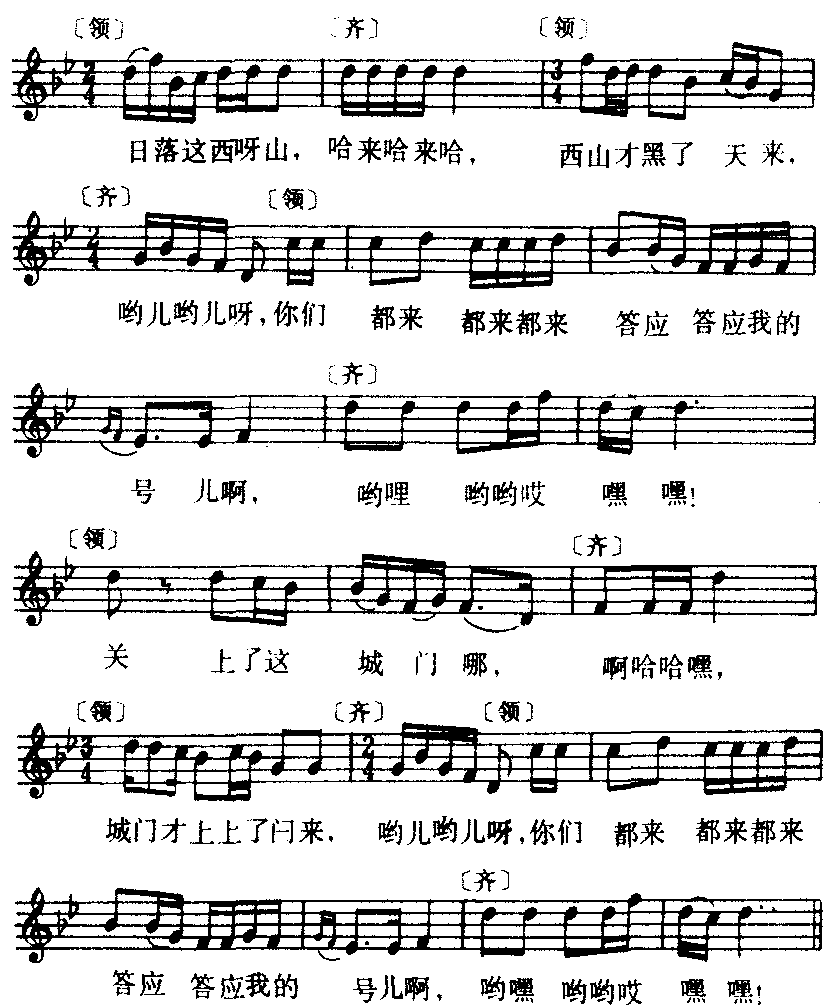打夯歌
属于劳动号子。打夯时,一般由2~4人,同时作抬起并迅速打下的动作,其力度、速度、移动方向及节奏间歇等,均由领夯者唱打夯歌掌握,既严整紧凑,又允许一些自由处理和短暂停顿。
打夯歌通常只唱衬词,其旋律朴素,结构短小,常作多次反复或变化进行,但也有的领唱者能够见景生情地即兴编词,在劳动过程中,时而豪迈地高歌,时而简短地对答、热烈地呼应,情绪活跃、风趣,富有浓厚的生活气息。
例如河北遵化的打夯歌,就颇有特色。夯头,只是一段引子,它也标志着一个劳动过程的起始部分。歌词中反映出一派生动的景象:太阳就要落山了,工人们仍在愉快地劳动着,在这里,并没有什么“加油干哪”之类的话语,但那种炽热的情感,却透过生动有力的号子声,给人们留下了难忘的印象。
夯 头 河北遵化
